Search Papers
37 papers
An Analysis of Error in written English paragraphs of non-English major students at Thu Dau Mot University: A Case Study
Nguyen Thi Man
The aim of the study is to investigate the errors in writing of non- English major students at Thu Dau Mot University. This study focused on paragraphs because the researcher has found that diverse errors in students’ paragraphs and wants to improve their writing skill. Seventy-four English paragraphs were written by 74 non-English major students coming from different academic majors at Thu Dau Mot University. All of the errors in the paragraphs were identified, synthesized and classified into various categorizations. The findings of the study show that the most frequently committed errors were tense, spellings, singular/plural form, prepositions, word order, fragment. On the basis of these results, many recommendations and pedagogical implications were suggested to help EFL lecturers with some teaching strategies that will reduce problems regarding writing English paragraphs among English learners.
Enhancing students’ productive skills in English Language Teaching through Project-Based Learning at Foreign Trade University – HCMC campus
Dang Thi My Dung, Phan Thi Nhat Phuong, Pham Nguyen Khanh Thuong, Ngo Thi Huyen Trang, Vu Thi My Hao
This article presents the results of a study on the current application of Project-based learning (PBL) in the teaching of English productive skills to students at the Foreign Trade University - Ho Chi Minh City Campus and how students can improve them. The research also provides insights into the expectations of students and entrepreneurs on that matter. The research group used the 5-point Likert scale in a questionnaire to collect data from students and interviewed FTU - HCMC’s English teachers and entrepreneurs to give further suggestions. Wilcoxon signed-rank test was used to analyze whether or not there is a significant difference in students’ English productive skills before and after using PBL in English language learning. This study found a significant difference in speaking skills of FTU - HCMC students before and after participating in PBL activities. The students improved their comprehension, range and the ability to deliver their ideas to the target reader for writing skills. However, no difference was found in their content, cohesion, and accuracy. Interviewed teachers and entrepreneurs supported the implementation of PBL in schools. Overall, PBL is encouraged in the settings of higher education institutions.
The use of English stative verbs in the progressive aspect: Changes and recommendations for English grammar teaching
Nguyen Thanh Thai
The present paper was to discuss how the use of the progressive forms with stative verbs has changed in present-day English and discuss what the teachers should do to deal with this issue in English grammar teaching. The discussion of the paper was based on theoretical framework of progressive aspect and stative verbs. Data collected from three corpus-informed grammar textbooks show that there has been being a change in grammatical usage, specifically in the use of the progressive form with stative verbs. In particular, traditional views support the limitation of the use of the progressive form with stative verbs, while present-day English ones prove that many stative verbs can be used in progressive form. Through the discussion, the writer of the present paper finally suggested two pedagogical implications for teaching English progressive aspect.
Huynh Phu So’s innate capacity of establishing Hao hoa buddhism in southwest region
Duong Hoang Loc, Huynh Ngoc Thu
Huynh Phu So is the Hoa Hao Buddhist founder who established doctrines and canon laws of religion at a young age. The religion he founded so far has nearly one million believers throughout the Southwest region. It has also spread to other provinces and cities in the country. His teachings are always remembered and applied by believers in their lives in order to build a compassionate, peaceful and prosperous society. Through bibliographic documents and fieldwork in the community, the article analyzes his genius to explain the birth of an endogenous religion with a large number of followers in the Southwest region today.
Key words: Innate capacity Hoa Hao Buddhism, Huynh Phu So, doctrine, canon law
The blended learning: English majors’ perception of its effects on their writing skills
Huỳnh Thị Bích Phượng
ABSTRACT
With the ever-increasing development of technology, online teaching is more readily accepted as a viable component in teaching and learning, and blended learning, the combining of online and face-to-face learning, is becoming commonplace in many higher education institutions. Definitely, challenges cannot be denied; however, it has been suggested and deployed globally including Vietnam. To some extent, both teachers and students present their positive points of view on this learning approach. However, there are a huge number of students expressing their lack of understanding the blended learning, which negatively affects their attitudes towards deployment of this learning approach as well as particular reference to motivation and interest. This paper is to assess the English majors’ perceptions on blended learning environment at tertiary level, which especially affects their learning the writing skills.
Results of the study are absolutely helpful for the author to understand the students’ perceptions of the effects on the blended learning; then, she can give some suggestions to enhance the learning of writing skills in the light of blended learning.
Key word: Blended learning, academic writing, perception
Investigating the impact of using language games on vocabulary teaching at a foreign language center in Binh Duong province
Nguyen Thanh Thai
The aim of this study was to explore the impact of using games in teaching vocabulary from the viewpoints of learners who already participated in language games. Through questionnaire, data for analysis were collected from 100 learners at a foreign language center in Binh Duong province. The results show that most of the participants are motivated to learn when they are in games. Moreover, they can acquire vocabulary more quickly and easily if the games are based on some factors such as learners’ gender, age and education status. The study suggests that in spite of the effectiveness of using games in vocabulary teaching, games should not be used too much or too less in the classrooms.
English is one of the keys to successful globalization; therefore, every country develops own English teaching policy. Teaching English in Asia is a very common issue ruled and supported by the government. This article is a contrastive study on different English policies in such Southeast and East Asian countries as China, India, Indonesia, Japan, Malaysia, South Korea, Taiwan, and Vietnam. The contrastive analysis focused on such aspects as school year of implementing English as required subject, teaching hours of English, teacher’s training, use of local and foreign teachers, teaching methods and materials, funding, etc. The contrastive study among countries mentioned above evaluated the advantages and disadvantages of certain English teaching policies. The positive results of one country can be borrowed and adapted by another country considering its cultural, political, economic or social features. On the other hand, the failures of one country’s English teaching policy can be considered and avoided by another country’s planning on English teaching policy.
This paper explores the pros and cons of using online setting for teaching and learning English comparing with in-class setting. Online setting is undergoing a fast transformation and becomes a widely promoted platform due to COVID-19 pandemic. By reviewing different studies on online teaching, this paper aims to provide readers a better understanding about online setting. These information would be useful in Vietnam where online class just has a medium used and short history comparing with other developed and developing countries, so online class in Vietnam may need adjust and consideration based on different culture and learner’s experience. This paper also give some suggestions in design of online learning for English languages to increase the learning effectiveness.
Suggestions for training strategy of Thu Dau Mot University in the process of approaching industrial revolution 4.0
Trinh Phuong Thao
Industrial Revolution 4.0 has become an indispensable trend in the development process of Vietnam and is increasingly applied in university education. The essence of the Industrial Revolution 4.0 is the application of technology, data science and the use of artificial intelligence for production and human life. In this impact, modern education, especially higher education, is the field most affected. Online teaching, with tools to support the teaching of the digital age, has been changing dramatically in the teaching and learning situation in universities, helping to modernize education and integrate with the world, but there are many issues that teachers and managers must consider to change teaching methods and training strategies, in order to deliver the best results. Starting from the actual situation, we propose specific and comprehensive measures to improve the teaching efficiency of Thu Dau Mot University and, to meet the needs of Vietnamese society and the development of Industrial Revolution 4.0.
Simulating 3r robot dynamics using imported cad in Maplesim
Nguyen Van Tan
With the development of information technology, many applications of robots are increasingly being applied to support research, learning, and teaching. This paper mainly investigates the modeling and simulation of a robotic arm with 3 degrees of freedom (dofs) for different applications. First, Kinematics and dynamics model of the robot based on the standard Denavit Hartenberg (D-H) modeling method, where the forward kinematics of robot is analyzed and computed to obtain by using the inverse kinematics, and then the solution of the robot dynamics is derived. Second, a CAD model of the robot is designed on CATIA software to convert to MapleSim software to simulation and control. Final, numerical simulation is presented to display results. This work provides a potential basis for the realization of the robotic arm in the industrial, education, and research field, which is of great significance for improving manufacturing efficiency and support teaching and research in the robot field.
Innovative Techniques and the Integrated Model of Teaching the First Accounting Course for English as Second Language learners
Mary Precy Aguilar-Lego
Across the world, the first accounting course provides serious challenges for teaching. These arise from powerful negative perceptions which include the anxiety associated with tertiary-level study and the differing backgrounds or majors of students required to take the course. This paper outlines some examples of nontraditional teaching techniques and highlights how the course could be best structured to overcome such negative views while at the same time responding to the changes in the industry. The design and content of the proposed course emphasizes the USER approach and is directed to English as second language learners. This is a case study in an Australian offshore campus and is the end result of the progressive improvement in the structure and delivery of the course.
Students’ difficulties in learning English for specific purpose grammar at the People’s Police University
Lê Hương Hoa, Lê Quang Trúc
This study investigated grammatical difficulties encountered by students of the People’s Police University while learning grammar in ESP courses. The design included questionnaires to teachers and students, and classroom participant observations. The findings indicated that the student respondents only perceived four target features to be difficult to learn. The results also showed that the students’ perceptions of grammatical difficulty were influenced by several factors including the inherent complexity of rules, L1 transfer, students’ differences in language aptitude, students’ infrequency of practice, and teaching methodology. The findings will hopefully be useful for teachers and researchers with an interest in this line of research.
This article introduces the general issues and benefits of simulation in teaching and scientific research. Thereby, the author illustrates by making 3D drawings, assemblies, videos simulating machine structures for teaching Theoretical mechanics, Construction machine subjects and the author's studies in the mechanical field. The application of simulation in teaching is to create videos by using Solidworks software, simulating the operating principle of machine structures. After that, show the videos to the students, excite them and make the lesson lively. And the simulation application in scientific research is mentioned as the way to use 3D drawings and simulation videos to preview the research results, promptly fix the wrong places. Since then, the research is quick, cost reduction is not worth it. The results of this paper are to point out the unique benefits that contribute positively to simulation in teaching and in scientific research.
Publication Information
Publisher
Thu Dau Mot University, Viet Nam
Editor-in-Chief

Assoc. Prof. Nguyen Van Hiep
Thu Dau Mot University
Thu Dau Mot University
Editorial Board
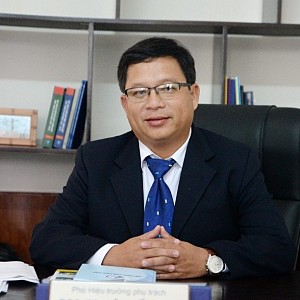
Assoc. Prof. Le Tuan Anh
Thu Dau Mot University
Thu Dau Mot University

PhD. Nguyen Quoc Cuong
Thu Dau Mot University
Thu Dau Mot University

PhD. Doan Ngoc Xuan
Thu Dau Mot University
Thu Dau Mot University

PhD. Nguyen Khoa Truong An
Thu Dau Mot University
Thu Dau Mot University

Assoc. Prof. Nguyen Thanh Binh
Thu Dau Mot University
Thu Dau Mot University

PhD. Le Thi Thuy Dung
Thu Dau Mot University
Thu Dau Mot University

PhD. Ngo Hong Diep
Thu Dau Mot University
Thu Dau Mot University
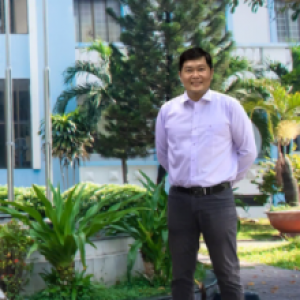
PhD. Nguyen Duc Dat Duc
Ho Chi Minh City University of Industry and Trade
Ho Chi Minh City University of Industry and Trade
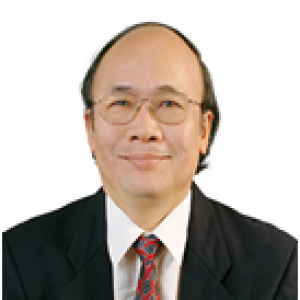
Assoc. Prof. Nguyen Van Duc
Animal Husbandry Association of Vietnam
Animal Husbandry Association of Vietnam

PhD. Nguyen Thi Nhat Hang
Department of Education and Training of Binh Duong Province
Department of Education and Training of Binh Duong Province

PhD. Nguyen Thi Cam Le
Vietnam Aviation Academy
Vietnam Aviation Academy

PhD. Trần Hạnh Minh Phương
Thu Dau Mot University
Thu Dau Mot University
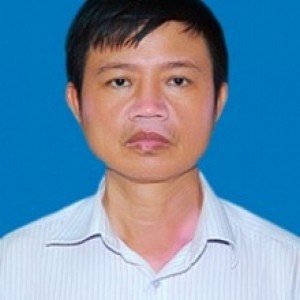
M.A. Pham Van Thinh
Thu Dau Mot University
Thu Dau Mot University

PhD. Nguyen Thi Lien Thuong
Thu Dau Mot University
Thu Dau Mot University
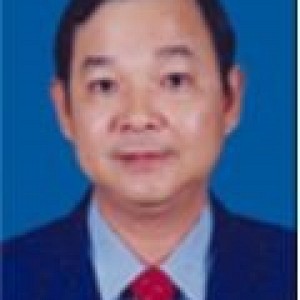
Prof. Le Quang Tri
Can Tho University
Can Tho University
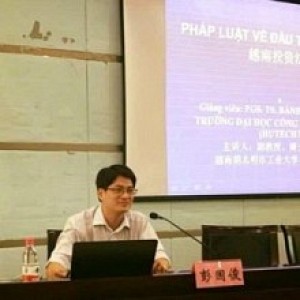
Prof. Banh Quoc Tuan
Thu Dau Mot University
Thu Dau Mot University

